-
 bitcoin
bitcoin $103094.926080 USD
3.95% -
 ethereum
ethereum $3398.208576 USD
6.43% -
 tether
tether $0.999971 USD
-0.04% -
 xrp
xrp $2.326205 USD
9.96% -
 bnb
bnb $947.145845 USD
4.46% -
 solana
solana $160.315987 USD
7.54% -
 usd-coin
usd-coin $1.000014 USD
0.01% -
 tron
tron $0.288163 USD
2.37% -
 dogecoin
dogecoin $0.164881 USD
5.50% -
 cardano
cardano $0.536519 USD
7.14% -
 hyperliquid
hyperliquid $40.526327 USD
6.62% -
 chainlink
chainlink $14.898178 USD
5.68% -
 bitcoin-cash
bitcoin-cash $483.923206 USD
4.44% -
 ethena-usde
ethena-usde $0.999280 USD
0.02% -
 stellar
stellar $0.276354 USD
6.32%
Is MFI effective in a sharp rise? How to operate MFI during a sharp rise?
MFI can signal overbought conditions during sharp crypto rises; watch for divergence and confirm with volume to anticipate corrections.
May 22, 2025 at 02:07 pm
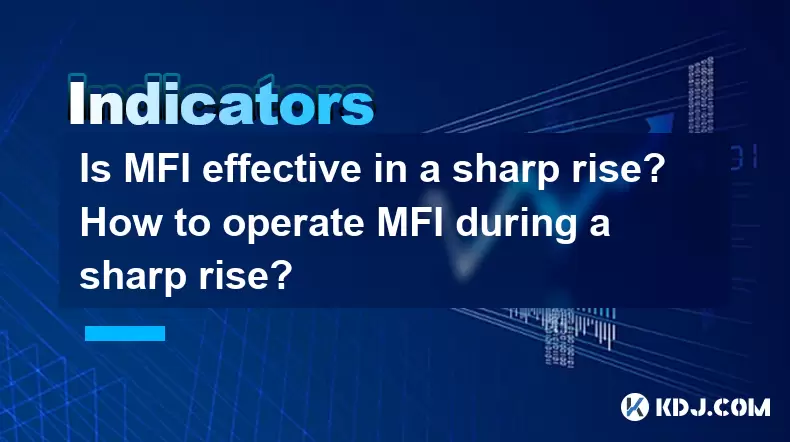
Is MFI effective in a sharp rise? How to operate MFI during a sharp rise?
The Money Flow Index (MFI) is a popular technical indicator used by traders to gauge the strength of money flowing in and out of a security. It is particularly useful in identifying overbought and oversold conditions in the market. In this article, we will explore the effectiveness of MFI during a sharp rise in cryptocurrency prices and provide detailed guidance on how to operate MFI during such market conditions.
Understanding MFI and Its Calculation
Before delving into the effectiveness of MFI during a sharp rise, it is crucial to understand what the MFI is and how it is calculated. The MFI is a momentum indicator that measures the inflow and outflow of money into a security over a specified period. It is similar to the Relative Strength Index (RSI) but incorporates volume, making it more sensitive to changes in trading volume.
The formula for calculating MFI involves several steps:
- Calculate the Typical Price: The typical price for each period is the average of the high, low, and close prices. The formula is: Typical Price = (High + Low + Close) / 3.
- Calculate the Raw Money Flow: Multiply the typical price by the volume for the period to get the raw money flow.
- Determine Positive and Negative Money Flow: Compare the current typical price to the previous period's typical price. If the current typical price is higher, it is considered positive money flow. If it is lower, it is considered negative money flow.
- Calculate the Money Ratio: Sum the positive money flow over a specified number of periods and divide it by the sum of the negative money flow over the same number of periods.
- Calculate the MFI: Finally, apply the money ratio to the MFI formula: MFI = 100 - (100 / (1 + Money Ratio)).
Effectiveness of MFI During a Sharp Rise
During a sharp rise in cryptocurrency prices, the effectiveness of the MFI can be assessed based on its ability to signal potential reversals and overbought conditions. In a sharp rise, the MFI can help traders identify when the market may be due for a correction.
- Overbought Signals: When the MFI reaches or exceeds 80, it is considered overbought. This can be a signal that the current sharp rise may be nearing its end, and a price correction could be imminent.
- Divergence: Another way the MFI can be effective during a sharp rise is through divergence. If the price continues to rise sharply but the MFI starts to decline, this could indicate a weakening momentum and a potential reversal.
- Volume Confirmation: Since MFI incorporates volume, it can provide a more robust signal during a sharp rise by confirming that the price increase is supported by strong trading volume.
How to Operate MFI During a Sharp Rise
Operating the MFI effectively during a sharp rise involves several key steps and considerations. Here is a detailed guide on how to use MFI in such market conditions:
- Set Up Your Chart: Begin by adding the MFI indicator to your trading chart. Most trading platforms allow you to customize the period over which the MFI is calculated. A common period used is 14 days, but you can adjust this based on your trading strategy.
- Monitor MFI Levels: Keep a close eye on the MFI levels, particularly when they approach or exceed 80. This indicates an overbought condition, suggesting that a price correction might be on the horizon.
- Watch for Divergence: Regularly compare the MFI readings with the price action. If you notice the price continuing to rise while the MFI starts to decline, this divergence could be a strong signal to consider taking profits or preparing for a potential reversal.
- Confirm with Volume: Use volume data to confirm the MFI signals. If the MFI indicates an overbought condition and the volume starts to decrease, this could reinforce the likelihood of an upcoming correction.
- Set Alerts: To stay proactive, set alerts on your trading platform for when the MFI reaches certain levels, such as 80 or 90. This can help you react quickly to potential overbought conditions.
- Combine with Other Indicators: While the MFI is a powerful tool, it is often more effective when used in conjunction with other technical indicators. Consider combining MFI with indicators like the Moving Average Convergence Divergence (MACD) or the RSI to get a more comprehensive view of market conditions.
Practical Example of Using MFI During a Sharp Rise
To illustrate how to operate the MFI during a sharp rise, let's consider a hypothetical scenario with a cryptocurrency that experiences a rapid price increase.
- Initial Setup: You notice that the price of the cryptocurrency has been rising sharply over the past few days. You add the MFI indicator to your chart with a 14-day period.
- Monitoring MFI: As the price continues to rise, you observe that the MFI has reached 85, indicating an overbought condition.
- Divergence Detection: You compare the price action with the MFI and notice that while the price keeps increasing, the MFI has started to decline slightly. This divergence suggests that the momentum behind the price rise may be weakening.
- Volume Analysis: You check the trading volume and see that it has started to decrease compared to the volume during the initial stages of the sharp rise. This confirms the weakening momentum signaled by the MFI.
- Decision Making: Based on the overbought MFI, the divergence, and the declining volume, you decide to take profits on your position. You set a sell order at a predetermined price level to secure your gains before a potential correction.
Common Mistakes to Avoid When Using MFI
While the MFI can be a valuable tool during a sharp rise, there are several common mistakes that traders should be aware of and avoid:
- Ignoring Other Indicators: Relying solely on the MFI without considering other technical indicators can lead to false signals. Always use MFI in conjunction with other tools to confirm your analysis.
- Overreacting to Overbought Signals: Just because the MFI indicates an overbought condition does not mean a price correction will occur immediately. Sometimes, overbought conditions can persist for longer periods, especially in strong bullish markets.
- Neglecting Volume: Since MFI incorporates volume, failing to analyze volume data can lead to misinterpretation of MFI signals. Always confirm MFI readings with volume analysis.
- Not Adjusting the Period: Using a standard 14-day period for MFI might not be suitable for all market conditions. Experiment with different periods to find what works best for your trading strategy.
Frequently Asked Questions
Q: Can MFI be used effectively in all market conditions?A: While MFI is a versatile indicator, its effectiveness can vary depending on the market conditions. In highly volatile markets, MFI can provide valuable insights into overbought and oversold conditions, but it should always be used in conjunction with other indicators to confirm signals.
Q: How often should I check the MFI during a sharp rise?A: During a sharp rise, it is advisable to check the MFI at least daily, if not more frequently, to stay on top of potential overbought conditions and divergences. Setting alerts for specific MFI levels can help you monitor the indicator more efficiently.
Q: Is it necessary to use a specific time frame when using MFI during a sharp rise?A: The choice of time frame when using MFI depends on your trading strategy. Shorter time frames like 5-minute or 15-minute charts can be useful for day traders, while longer time frames like daily or weekly charts may be more suitable for swing traders. Experiment with different time frames to find what works best for you.
Q: Can MFI help predict the exact timing of a price correction during a sharp rise?A: While MFI can provide signals that a price correction may be imminent, it cannot predict the exact timing of such events. It is best used as a tool to help you make informed trading decisions rather than as a precise predictor of market movements.
Disclaimer:info@kdj.com
The information provided is not trading advice. kdj.com does not assume any responsibility for any investments made based on the information provided in this article. Cryptocurrencies are highly volatile and it is highly recommended that you invest with caution after thorough research!
If you believe that the content used on this website infringes your copyright, please contact us immediately (info@kdj.com) and we will delete it promptly.
- Crypto ROI in 2025: Unearthing the Gems Beyond the Hype
- 2025-11-06 09:05:02
- Bitcoin's 'Silent IPO': Allocations and the Sideways Phase
- 2025-11-06 09:25:01
- Score Big with BetMGM Bonus Codes: NBA, NFL Week 10 Action!
- 2025-11-06 08:45:01
- Crypto Coins on Fire: MoonBull, TRON LINK, and the Future of Blockchain
- 2025-11-06 09:10:01
- Circle, Firearms, and USDC: A New Frontier in Digital Payments, Ya Know?
- 2025-11-06 09:10:01
- Bitcoin's Flywheel Effect: Riding the Wave to All-Time Highs (and Beyond?)
- 2025-11-06 08:50:02
Related knowledge
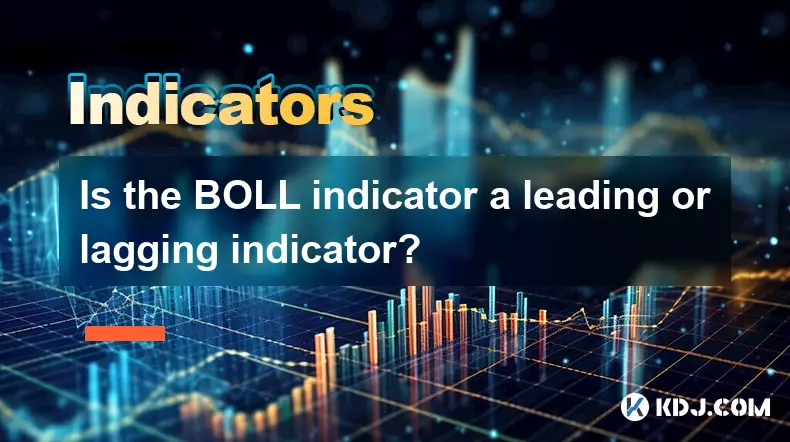
Is the BOLL indicator a leading or lagging indicator?
Nov 06,2025 at 09:20am
Understanding the BOLL Indicator in Cryptocurrency TradingThe Bollinger Bands (BOLL) indicator is widely used across financial markets, including the ...
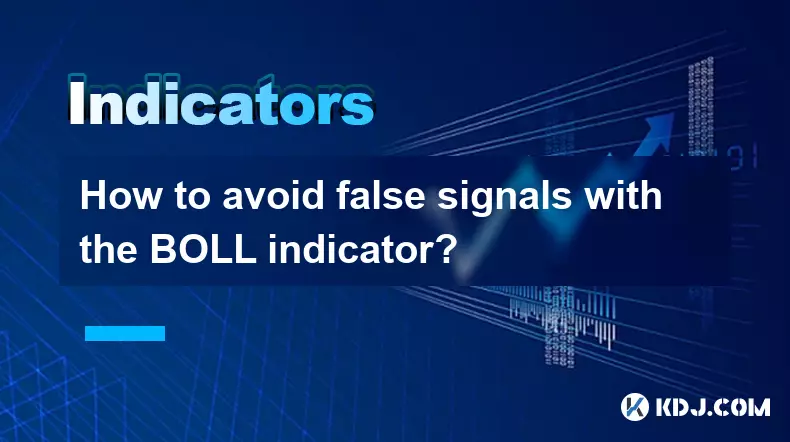
How to avoid false signals with the BOLL indicator?
Nov 06,2025 at 09:45am
Decentralized Exchanges Gain Momentum in 20241. Decentralized exchanges (DEXs) have seen a significant surge in trading volume, surpassing several cen...

How to use the KDJ indicator to find continuation patterns?
Nov 06,2025 at 08:49am
Understanding the KDJ Indicator in Cryptocurrency Trading1. The KDJ indicator, also known as the Stochastic Oscillator with a J-line adjustment, is wi...
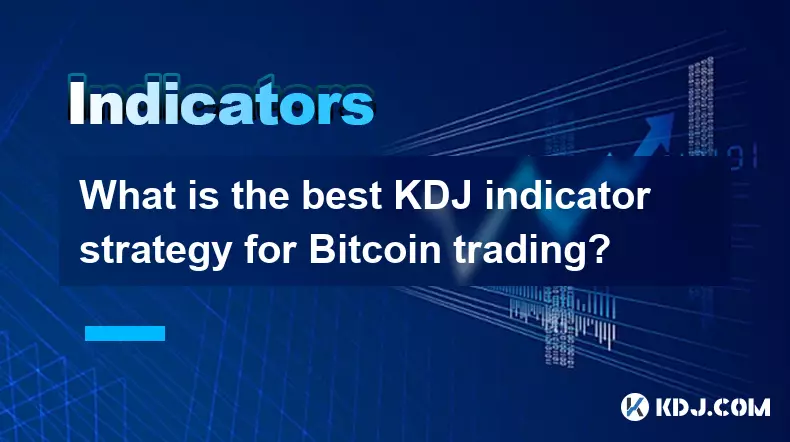
What is the best KDJ indicator strategy for Bitcoin trading?
Nov 06,2025 at 09:00am
Emerging Trends in the Cryptocurrency Market1. Decentralized finance (DeFi) platforms continue to reshape traditional financial models by offering per...
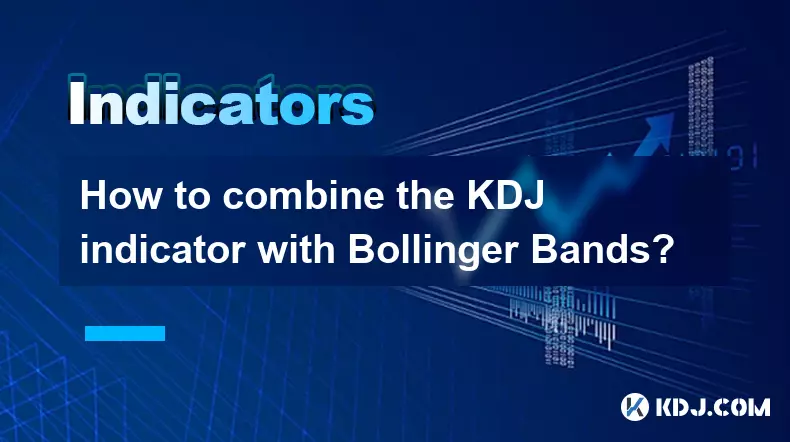
How to combine the KDJ indicator with Bollinger Bands?
Nov 06,2025 at 08:04am
Understanding the KDJ Indicator and Bollinger Bands in Crypto TradingThe KDJ indicator and Bollinger Bands are two widely used technical analysis tool...
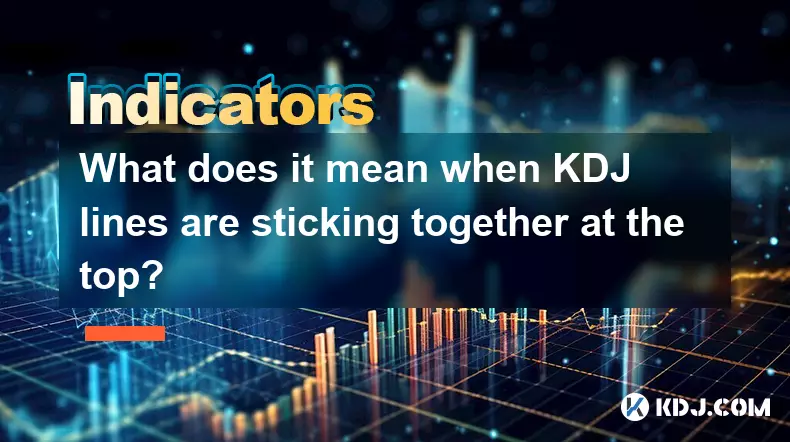
What does it mean when KDJ lines are sticking together at the top?
Nov 06,2025 at 10:00am
Understanding KDJ Lines Converging at the TopThe KDJ indicator, a popular tool in technical analysis within the cryptocurrency market, combines the st...

Is the BOLL indicator a leading or lagging indicator?
Nov 06,2025 at 09:20am
Understanding the BOLL Indicator in Cryptocurrency TradingThe Bollinger Bands (BOLL) indicator is widely used across financial markets, including the ...

How to avoid false signals with the BOLL indicator?
Nov 06,2025 at 09:45am
Decentralized Exchanges Gain Momentum in 20241. Decentralized exchanges (DEXs) have seen a significant surge in trading volume, surpassing several cen...

How to use the KDJ indicator to find continuation patterns?
Nov 06,2025 at 08:49am
Understanding the KDJ Indicator in Cryptocurrency Trading1. The KDJ indicator, also known as the Stochastic Oscillator with a J-line adjustment, is wi...

What is the best KDJ indicator strategy for Bitcoin trading?
Nov 06,2025 at 09:00am
Emerging Trends in the Cryptocurrency Market1. Decentralized finance (DeFi) platforms continue to reshape traditional financial models by offering per...

How to combine the KDJ indicator with Bollinger Bands?
Nov 06,2025 at 08:04am
Understanding the KDJ Indicator and Bollinger Bands in Crypto TradingThe KDJ indicator and Bollinger Bands are two widely used technical analysis tool...

What does it mean when KDJ lines are sticking together at the top?
Nov 06,2025 at 10:00am
Understanding KDJ Lines Converging at the TopThe KDJ indicator, a popular tool in technical analysis within the cryptocurrency market, combines the st...
See all articles























![[4K 60fps] Morcee by DTMaster09 (1 Coin) [4K 60fps] Morcee by DTMaster09 (1 Coin)](/uploads/2025/11/06/cryptocurrencies-news/videos/690bf31847bc1_image_500_375.webp)


















































